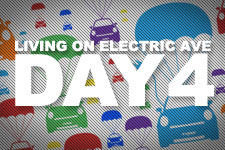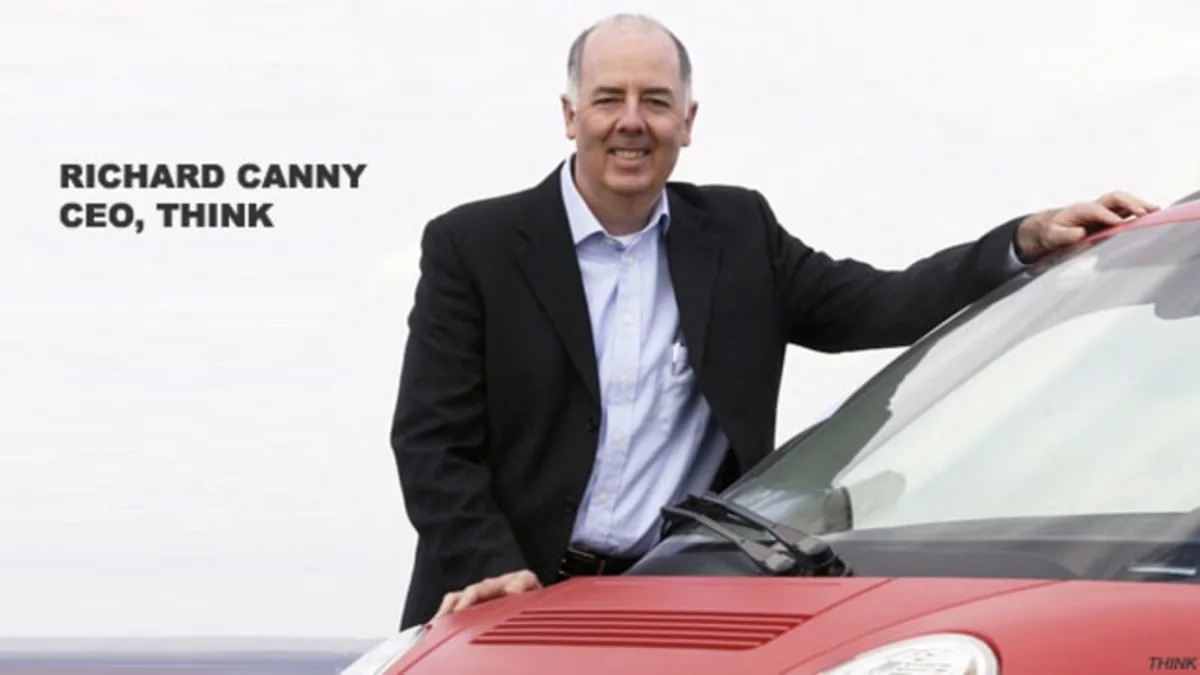 Today, I interviewed Think CEO Richard Canny to discuss the car, his thoughts on EVs, and plans for the U.S. market. Here is what I learned:
Today, I interviewed Think CEO Richard Canny to discuss the car, his thoughts on EVs, and plans for the U.S. market. Here is what I learned:
1. The car I am driving is powered by a so-called "Zebra" sodium battery, which uses molten sodium aluminumchloride (molten salt) as part of the battery chemistry. These batteries should be kept under charge when not in use, to keep them molten and ready for use. The cars that will be sold in the U.S. will use lithium ion batteries, technology similar to what powers laptop computers and power tools, as well as the forthcoming Nissan Leaf EV. 2. While Professor Huei Peng from the University of Michigan told me the real cost of battery packs robust enough to move a car down the road for 100 miles is about $1,000 per kilowatt hour, Canny says it is more like $600. The Think City EV I am driving has a 23 kilowatt-hour battery pack -- that's how you measure the capacity of the battery, which determines the range of the vehicle -- which would mean the battery alone costs $13,800.
3. Canny doesn't sound keen in our interview to develop a traditional car dealer network to sell the Think City. He is vague on this score, but he says there is practically no maintenance needed on the cars until brake pads need replacing at around 50,000 miles. He is hinting, though he did not confirm, that he is in talks with retail chains such as Best Buy to sell the cars.
4. The cars are built by assembling a series of modules. In other words, the facility in Indiana that will put the cars together is not so much a traditional auto assembly plant as a facility that he says resembles "a trim line" at a regular auto plant. The thinking here is that this makes the cars simpler and cheaper to build. It's worth noting that the Think City has plastic body panels. Indeed the exterior body panels will remind people, perhaps, of the plastic found on the interior door panels of many inexpensive cars. The plastic helps keep the weight down but doesn't compromise safety. And who has time to wax a car anyway?
5. Canny is not so much worried about competition from conventional cars like the Ford Focus or Volkswagen Golf being electrified. Thinks, he points out, are built from the ground up to be electric, meaning they are light and don't need as big, or as expensive, of a battery pack to push them down the road. The City weighs about 1,000 kilograms, or roughly 2,200 pounds. By comparison, the Nissan Leaf weighs about 3,500 pounds.
6. Canny says pricing for Think City with a back seat and air conditioner will be below $20,000 if federal and state tax credits are factored in, with a final cost to the buyer of around $17,000-$19,000, though this could be lower in some areas where subsidies are bigger.
After talking to Canny, I decided it was time for lunch. Which in this case meant digesting a bunch of statistics and studies about the future of EVs, their cost, the potential for consumer acceptance, and other issues. Here are my findings:
1. A University of Michigan study released last fall showed that 46 percent of consumers said they'd consider paying a $2,500 premium for a plug-in hybrid electric vehicle. But only 30 percent said they'd be willing if it was $5,000 extra, and that number dropped to just 14 percent when the up-charge was raised to $10,000.
2. Multiple studies find that there is enough capacity in the U.S. electric grid to power 68 to 73 percent of existing light-duty vehicles, or about 163 million electric vehicles, assuming investments are made in load management technology and a lot of the charging is done at night.
3. The environmental impact of electrifying that many vehicles is not the same for all parts of the country. In areas that depend mostly on natural gas for electricity, one study shows the greenhouse gas reduction as high as 40 percent, while areas that get most of their electricity from coal would be a wash, with no greenhouse gas benefits. That finding, though, assumed no investment in technology that makes coal-powered utility plants cleaner. Energy security, though, is a big issue. The U.S. is the Saudi Arabia of coal. Nuclear power, while not cheered by environmentalists, is a clean source of electricity that does not rely on importing energy. Relying more on these sources starts to make oil a lot less attractive.
Click the links below to read about our experience Living On Electric Avenue
 Living on Electric Avenue
Living on Electric Avenue Go to: Intro Day: [1] [2] [3] [4] [5]


Sign in to post
Please sign in to leave a comment.
Continue